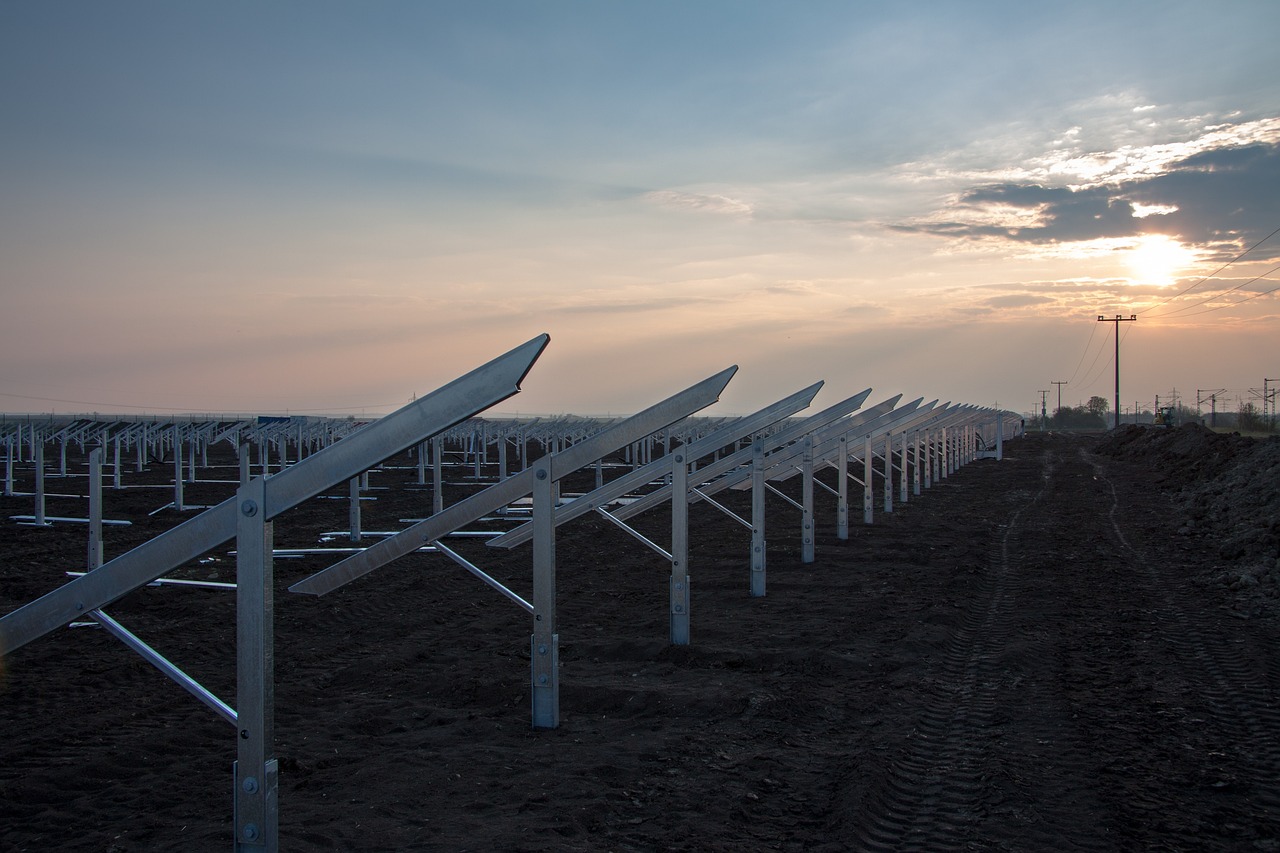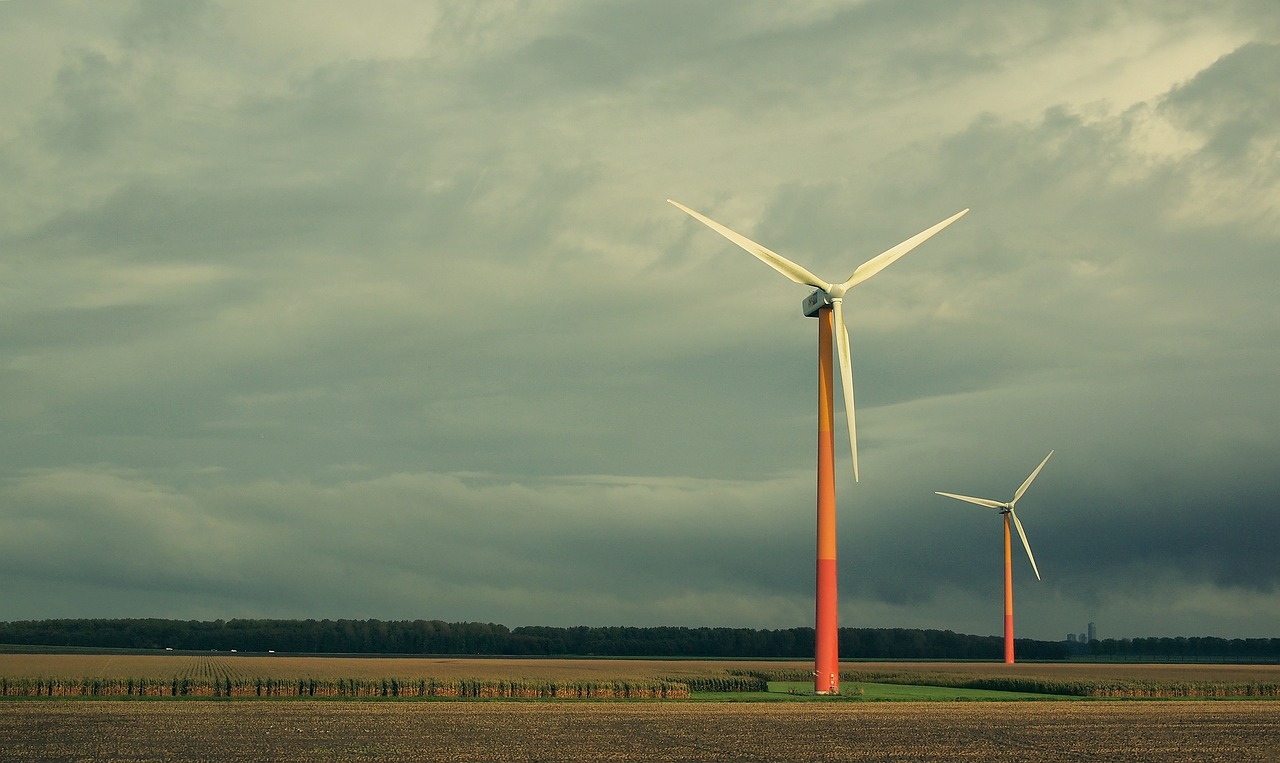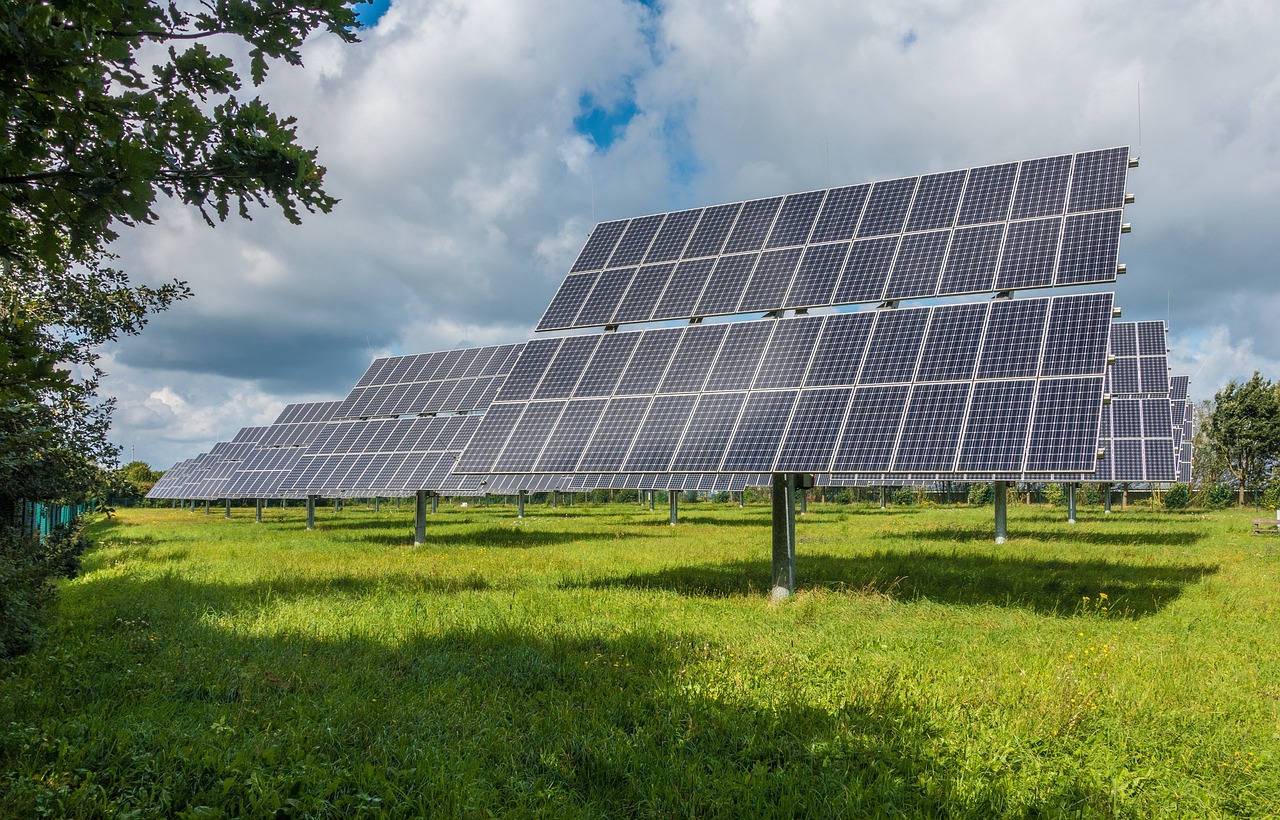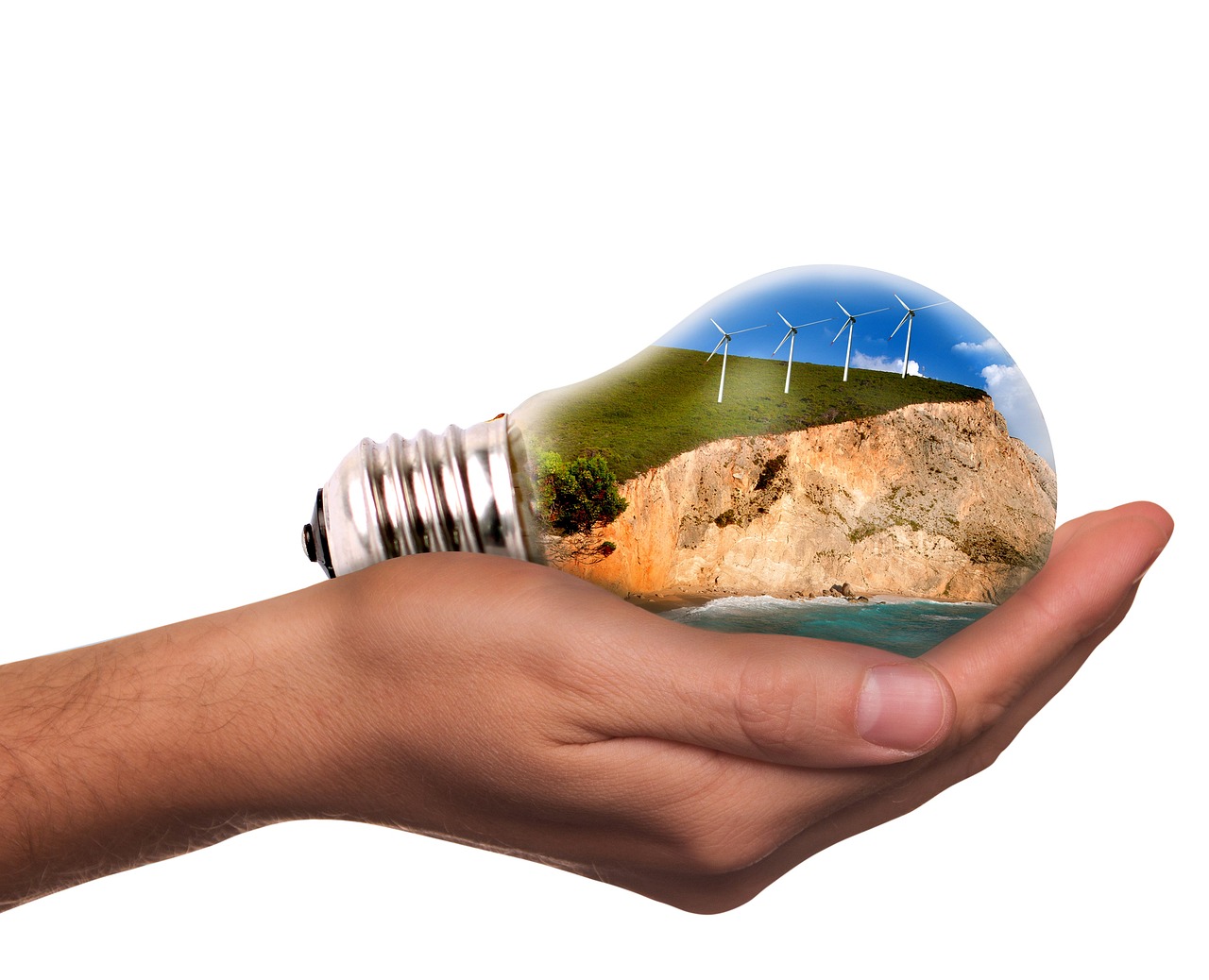Can Green Energy Become an Agent of Social Change?
Green energy is not just a buzzword; it's a revolution that's reshaping our world. Imagine a future where the air is cleaner, jobs are plentiful, and communities thrive without the heavy burden of pollution. This isn't just a dream—it's a reality that green energy initiatives are making possible. By harnessing the power of the sun, wind, and other renewable resources, we can create a ripple effect that transforms societies at their core.
The transformative potential of green energy extends far beyond environmental benefits. It acts as a catalyst for social change, driving economic development and fostering a sense of community. Think about it: when a community invests in solar panels or wind turbines, they're not just generating electricity; they're investing in their future. They're creating jobs, enhancing local economies, and improving the quality of life for everyone involved.
Moreover, as we delve into the heart of this movement, we discover that green energy is intertwined with the concept of environmental justice. Historically marginalized communities often bear the brunt of environmental degradation and climate change. Green energy initiatives can level the playing field, providing equitable access to clean resources. This means that everyone, regardless of their socioeconomic status, can benefit from the transition to renewable energy. It’s like giving every community a seat at the table, ensuring that no one is left behind.
As we explore this topic further, we'll uncover inspiring case studies that showcase how local efforts can lead to significant social change. From solar energy programs in underserved areas to wind energy projects creating jobs in rural communities, the evidence is clear: green energy is a powerful tool for positive change. But it's not just about success stories; we also need to address the barriers that hinder widespread adoption. Financial constraints, lack of infrastructure, and political resistance can all stifle progress. However, with the right policy frameworks and government incentives, we can overcome these challenges and pave the way for a greener future.
Looking ahead, the future of green energy is bright. It holds immense potential for not only addressing climate issues but also fostering inclusive economic growth. By embracing renewable technologies, we can create a sustainable world where everyone has the opportunity to thrive. So, can green energy become an agent of social change? The answer is a resounding yes, and the journey has only just begun.
- What is green energy? Green energy refers to renewable energy sources that are environmentally friendly, such as solar, wind, and hydroelectric power.
- How does green energy contribute to social change? By creating jobs, improving community health, and providing equitable access to energy resources, green energy initiatives can drive significant social change.
- What are some barriers to adopting green energy? Financial constraints, lack of infrastructure, and political resistance are common barriers that can hinder the adoption of green energy solutions.
- How can policy frameworks support green energy? Effective policies can provide incentives for renewable energy adoption, ensuring that communities have access to the resources they need to thrive.

The Role of Green Energy in Community Development
Green energy isn't just about saving the planet; it's a powerful tool for community development. Imagine a neighborhood where the air is clean, the economy is thriving, and the residents are engaged in sustainable practices. This vision is becoming a reality as communities embrace renewable energy sources, transforming their local landscapes. By investing in green energy, communities can create jobs, stimulate local economies, and foster a sense of unity among residents.
One of the most significant impacts of green energy initiatives is job creation. For example, solar panel installations, wind turbine maintenance, and bioenergy production require a skilled workforce. These jobs often pay well and provide opportunities for training and advancement, enabling individuals to uplift their economic status. In many cases, these jobs are available to a diverse range of people, including those who may have faced barriers to employment in traditional sectors.
Furthermore, green energy projects can lead to the development of local businesses. As the demand for renewable energy solutions grows, local entrepreneurs can seize the opportunity to provide services and products related to green energy. This not only creates a vibrant local economy but also encourages innovation and entrepreneurship. Think about it: when a community rallies around a common goal like sustainability, it fosters a spirit of collaboration and creativity that can lead to groundbreaking ideas and initiatives.
Additionally, green energy initiatives promote sustainable practices that enhance the quality of life for residents. For instance, community gardens powered by solar energy or energy-efficient public buildings can significantly reduce utility costs for families and local governments. This financial relief allows more funds to be allocated to essential services such as education and healthcare, ultimately improving the overall well-being of the community.
Moreover, the social fabric of a community can be strengthened through green energy initiatives. When residents come together to advocate for renewable energy projects or participate in local clean-up efforts, they build connections and foster a sense of belonging. This social cohesion is vital, as it creates a network of support that can be invaluable during challenging times.
However, it’s essential to recognize that the transition to green energy must be inclusive. Equitable access to renewable resources is crucial to ensure that all community members benefit from these initiatives. By actively involving marginalized groups in the planning and implementation of green energy projects, communities can address historical inequities and create a more just society.
To summarize, green energy plays a pivotal role in community development by:
- Creating jobs and boosting local economies
- Encouraging entrepreneurship and innovation
- Promoting sustainable practices that enhance quality of life
- Strengthening social connections among residents
- Ensuring equitable access to resources for all community members
As we look to the future, the potential for green energy to transform communities is immense. With the right support and commitment, we can harness this power to create thriving, sustainable communities that are resilient to the challenges of tomorrow.
- What are the main benefits of green energy for communities?
Green energy provides numerous benefits, including job creation, economic growth, improved quality of life, and enhanced community cohesion. - How can communities ensure equitable access to green energy?
Involving marginalized groups in the planning process and providing financial assistance or incentives can help ensure that all community members benefit from green energy initiatives. - What types of green energy projects can communities implement?
Communities can implement various projects, including solar energy installations, wind farms, and community gardens powered by renewable energy sources.

Environmental Justice and Green Energy
The concept of environmental justice is gaining traction as we recognize that not all communities are affected equally by environmental issues. Often, marginalized communities bear the brunt of pollution and climate change, facing health risks and economic disadvantages. This is where green energy steps in as a potential equalizer. By providing equitable access to renewable resources, we can address these disparities and create a more just society. Imagine a world where every community, regardless of its socio-economic status, has access to clean energy. Wouldn't that be a game-changer?
Green energy initiatives not only provide cleaner alternatives to fossil fuels but also empower communities to take control of their energy sources. For instance, community solar projects allow residents to invest in solar energy collectively, reducing their electricity bills and increasing their energy independence. This model not only promotes sustainability but also fosters a sense of community ownership and pride. In essence, it's not just about energy; it's about giving power back to the people.
Moreover, the transition to renewable energy can stimulate local economies. According to a recent report, the renewable energy sector has created more jobs than the fossil fuel industry in many regions. These jobs often provide fair wages and benefits, helping to lift families out of poverty. Here’s a quick look at some of the benefits of integrating green energy into community development:
| Benefits | Description |
|---|---|
| Job Creation | Renewable energy projects generate a variety of jobs, from engineering to installation, benefiting local economies. |
| Health Benefits | Reducing reliance on fossil fuels decreases air and water pollution, leading to improved community health outcomes. |
| Economic Stability | Investing in local renewable energy projects fosters economic resilience and reduces vulnerability to energy price fluctuations. |
However, the path to achieving environmental justice through green energy is not without its challenges. It requires a concerted effort from governments, businesses, and communities to ensure that these initiatives are accessible to everyone. Policies must be in place to support low-income households and marginalized communities, ensuring they are not left behind in the transition to a greener economy. As we move forward, it’s essential to keep the conversation going and advocate for policies that promote equitable access to renewable energy resources. After all, the fight for environmental justice is a fight for a better future for all.
In conclusion, the intersection of environmental justice and green energy presents an opportunity to not only combat climate change but also to address deep-rooted social inequalities. By prioritizing access to renewable energy for marginalized communities, we can pave the way for a more sustainable and just society. It’s time to harness the power of green energy to create lasting social change!
- What is environmental justice? Environmental justice is the fair treatment of all people, regardless of race, color, or income, in the development and enforcement of environmental laws and policies.
- How can green energy promote social change? By providing equitable access to renewable energy sources, green energy initiatives can empower marginalized communities, create jobs, and improve health outcomes.
- What are some examples of green energy initiatives? Examples include community solar projects, wind farms in rural areas, and energy efficiency programs aimed at low-income households.

Case Studies of Successful Initiatives
The impact of green energy initiatives can be vividly illustrated through various case studies that highlight successful projects across different communities. These examples not only showcase the potential of renewable energy but also demonstrate how localized efforts can lead to significant social change. One such initiative is the Solarize program in Portland, Oregon, which has effectively mobilized community members to invest in solar energy installations. By leveraging group purchasing power, participants have significantly reduced the cost of solar panels, making renewable energy more accessible to low-income households. This program not only helps families save on energy bills but also fosters a sense of community and shared purpose.
Another notable example is the Wind for Schools program, which operates in various states across the U.S. This initiative aims to educate students about renewable energy while simultaneously installing small wind turbines at schools. The dual benefit of this program is that it provides hands-on learning experiences for students and generates clean energy for the schools, often resulting in substantial savings on energy costs. The program has successfully engaged students, teachers, and local communities, creating a ripple effect of awareness and enthusiasm for renewable energy.
In addition to these programs, the Community Choice Aggregation (CCA) model has gained traction in several states, allowing communities to procure renewable energy on behalf of their residents. For instance, Marin Clean Energy in California has successfully transitioned over 100,000 customers to cleaner energy sources, reducing greenhouse gas emissions and promoting sustainable practices. The CCA model empowers local governments to take control of their energy sources, leading to increased investment in renewable projects and fostering local job creation.
These case studies illustrate the transformative power of green energy initiatives in fostering social change. By providing economic opportunities, enhancing educational experiences, and empowering communities, these projects pave the way for a more sustainable and equitable future. However, it's essential to recognize that while these initiatives are successful, they also highlight the need for continued support and investment in renewable energy to ensure that all communities can benefit from these advancements.
- What are some key benefits of green energy initiatives? Green energy initiatives can lead to job creation, reduced energy costs, and improved environmental health in communities.
- How can communities get involved in green energy projects? Communities can participate through local programs, advocacy for policy changes, and collaborative projects that promote renewable energy adoption.
- What challenges do green energy initiatives face? Common challenges include financial constraints, lack of infrastructure, and resistance from political entities.
- Are there government incentives for renewable energy? Yes, many governments offer tax credits, rebates, and grants to encourage the adoption of renewable energy technologies.

Solar Energy in Underserved Areas
Imagine living in a community where the sun shines bright, yet you struggle to pay your electricity bills every month. This is the reality for many in underserved areas. However, solar energy is emerging as a beacon of hope, transforming lives and communities. By harnessing the power of the sun, these areas can not only reduce their energy costs but also improve their overall quality of life.
Solar energy initiatives in underserved regions are not just about installing panels; they represent a holistic approach to community development. When solar projects are implemented, they often lead to a ripple effect of positive outcomes. For instance, local job creation is a significant benefit. Skilled and unskilled labor is needed for installation, maintenance, and operation of solar systems, providing a source of employment for residents. This not only boosts the local economy but also fosters a sense of pride and ownership within the community.
Moreover, access to solar energy can drastically improve living conditions. Many families in these areas face energy poverty, where the cost of energy consumes a significant portion of their income. By switching to solar, they can redirect those funds towards essential needs such as education, healthcare, and food. Imagine a mother being able to afford school supplies for her children because her energy bills are significantly lower! This shift can lead to empowered communities where individuals have the resources to thrive.
Additionally, solar energy promotes environmental sustainability. By reducing reliance on fossil fuels, communities can decrease their carbon footprint, contributing to a healthier planet. This is particularly important in areas that are often disproportionately affected by environmental degradation and climate change. As these communities embrace renewable energy, they are not only improving their own lives but also setting an example for others to follow.
However, the journey to solar adoption is not without its challenges. Many underserved areas face barriers such as financial constraints and lack of awareness about available programs. To overcome these hurdles, it is essential to implement educational initiatives that inform residents about the benefits of solar energy and the resources available to them. Collaborations with local governments and organizations can help facilitate these educational efforts, ensuring that everyone has access to the information they need to make informed decisions.
In conclusion, solar energy has the potential to be a game-changer for underserved areas. It not only provides a sustainable energy source but also fosters economic growth, enhances quality of life, and promotes environmental justice. As we move forward, it is crucial to continue supporting these initiatives, as they can lead to lasting social change and empower communities to build a brighter future.
- What are the benefits of solar energy for underserved communities? Solar energy can lower electricity costs, create jobs, and improve living conditions.
- How can communities access solar energy programs? Many local governments and organizations offer resources and educational programs to help communities adopt solar energy.
- What challenges do underserved areas face in adopting solar energy? Financial constraints, lack of infrastructure, and limited awareness of available resources can hinder adoption.

Wind Energy and Job Creation
Wind energy is not just a clean alternative to fossil fuels; it is also a powerful engine for job creation and economic growth, especially in rural areas. As the world shifts towards sustainable energy sources, the wind energy sector is rapidly expanding, bringing with it a plethora of opportunities for individuals and communities alike. Imagine the vast fields dotted with towering wind turbines, each one representing not just a source of renewable energy, but also a job for someone in the community.
According to recent studies, the wind energy industry has created over 100,000 jobs in the United States alone, with projections suggesting this number could triple in the coming decade. These jobs span a variety of roles, including:
- Manufacturing of turbine components
- Installation and maintenance of wind farms
- Research and development in renewable technologies
- Project management and consulting services
Moreover, the benefits of wind energy extend beyond just the numbers. They foster a sense of community pride and resilience. When local residents are involved in the development and maintenance of wind farms, they gain a stake in the success of these projects, which can lead to increased community cohesion. For instance, many wind projects offer training programs that equip locals with the necessary skills to work in this burgeoning field, thus empowering them and creating a sustainable workforce.
However, the impact of wind energy on job creation is not uniform across all regions. Areas with established wind energy infrastructure tend to see more job opportunities compared to regions that are just beginning to explore this renewable resource. This disparity highlights the need for targeted policies and investments to ensure that all communities can benefit from the wind energy boom.
Furthermore, the transition to wind energy is also a catalyst for economic diversification. In many rural areas, where traditional industries may be declining, wind energy projects can provide much-needed economic stability. By attracting investments and creating jobs, these projects can help to revitalize local economies and reduce dependence on a single industry.
In conclusion, wind energy is more than just a solution to our energy crisis; it is a vital contributor to job creation and economic resilience. As we embrace this renewable resource, we must also ensure that the benefits are shared equitably across all communities, paving the way for a sustainable and prosperous future.
Q: How many jobs does the wind energy sector create?
A: The wind energy sector has created over 100,000 jobs in the U.S. and is expected to triple in the coming decade.
Q: What types of jobs are available in the wind energy industry?
A: Jobs include manufacturing, installation, maintenance, research, and project management.
Q: How does wind energy benefit local communities?
A: Wind energy projects can provide job training, economic diversification, and community engagement, leading to overall growth and stability.

Barriers to Implementation
Despite the **transformative potential** of green energy, there are several significant barriers that hinder its widespread adoption. One of the most pressing issues is **financial constraints**. Many communities, especially those in economically disadvantaged areas, struggle to find the necessary funding to invest in renewable energy projects. This lack of financial resources can stifle innovation and prevent the implementation of sustainable energy solutions. Imagine wanting to plant a garden but lacking the seeds and tools; the same principle applies here.
Another major barrier is the **lack of infrastructure**. In many regions, especially rural areas, the existing energy infrastructure is outdated and not equipped to handle renewable energy technologies. This can result in increased costs and complications when trying to integrate green energy sources into the current system. It’s akin to trying to fit a square peg into a round hole; without the right adjustments, it simply won’t work.
Furthermore, **political resistance** plays a crucial role in impeding green energy initiatives. In some cases, policymakers may prioritize traditional energy sources due to lobbying from fossil fuel industries or a lack of understanding about the benefits of renewable energy. This can lead to legislation that favors outdated practices, leaving communities in a cycle of dependency on non-renewable resources. It's frustrating, isn't it? When the very people who are supposed to lead us toward a sustainable future hesitate to embrace change.
In addition to these barriers, there are also **social and cultural factors** that can affect the acceptance of green energy. In some communities, there may be a lack of awareness or understanding of renewable energy technologies, leading to skepticism or resistance. Education and outreach play a pivotal role in overcoming these hurdles, as they can help demystify green energy and showcase its potential benefits.
To illustrate the impact of these barriers, consider the following table that summarizes the main obstacles to green energy implementation:
| Barrier | Description |
|---|---|
| Financial Constraints | Lack of funding for renewable energy projects, especially in low-income areas. |
| Lack of Infrastructure | Outdated energy systems that cannot support new renewable technologies. |
| Political Resistance | Legislation that favors fossil fuels over renewable energy due to lobbying. |
| Social and Cultural Factors | Community skepticism and lack of awareness about renewable energy benefits. |
Addressing these barriers requires a concerted effort from multiple stakeholders, including governments, businesses, and communities. By fostering collaboration and open dialogue, we can pave the way for a more sustainable future. After all, overcoming these challenges is not just about technology; it's about creating a **movement** that empowers individuals and communities to embrace renewable energy as a viable and beneficial alternative.
- What are the main barriers to implementing green energy? The main barriers include financial constraints, lack of infrastructure, political resistance, and social and cultural factors.
- How can communities overcome financial constraints? Communities can seek government grants, partner with non-profits, or engage in crowdfunding to secure funding for renewable energy projects.
- Why is political support important for green energy? Political support is crucial for creating favorable policies and incentives that promote the adoption of renewable energy technologies.
- What role does education play in promoting green energy? Education helps raise awareness and understanding of renewable energy, which can reduce skepticism and encourage community engagement.

Policy Frameworks Supporting Green Energy
In the quest for a sustainable future, effective policy frameworks play a crucial role in promoting the adoption of green energy. These frameworks not only establish guidelines for renewable energy development but also ensure that the transition to greener technologies is equitable and beneficial for all segments of society. Think of these policies as the scaffolding of a building; without a solid structure, the entire project can collapse. By providing a stable foundation, these frameworks help to create an environment where green energy can flourish.
One of the key components of these frameworks is the implementation of incentives that encourage both individuals and businesses to invest in renewable energy sources. These incentives can take various forms, including tax credits, rebates, and grants. For instance, when homeowners are offered tax deductions for installing solar panels, it not only makes the initial investment more palatable but also promotes a culture of sustainability. Similarly, businesses that adopt renewable energy solutions can benefit from reduced operational costs and improved public image, which can lead to increased customer loyalty.
Moreover, the role of government regulations cannot be overstated. Regulations can set mandatory renewable energy targets, ensuring that a certain percentage of energy consumption comes from sustainable sources. This is akin to a coach setting performance goals for a sports team; it pushes everyone to strive for a common objective. By establishing clear benchmarks, governments can drive innovation and motivate companies to develop cutting-edge technologies that meet these standards.
International collaborations also play a significant role in shaping effective policy frameworks. Countries can learn from each other’s experiences, sharing best practices and resources to implement green energy solutions more effectively. For example, the Paris Agreement serves as a global framework where nations commit to reducing greenhouse gas emissions and enhancing their renewable energy capabilities. This collective effort is crucial because climate change knows no borders; it requires a united front.
To illustrate the impact of these policies, consider the following table that outlines various types of incentives and their benefits:
| Incentive Type | Description | Potential Benefits |
|---|---|---|
| Tax Credits | Reductions in tax liability for renewable energy investments | Encourages investment, reduces upfront costs |
| Grants | Direct financial assistance for renewable energy projects | Supports innovation, lowers financial barriers |
| Feed-in Tariffs | Guaranteed payments for energy produced from renewable sources | Stabilizes income for producers, promotes energy generation |
As we look to the future, it’s clear that the success of green energy initiatives largely hinges on the strength and adaptability of these policy frameworks. They must evolve in response to technological advancements and changing societal needs. Just like a river carving its path through the landscape, effective policies can shape the future of energy in ways we’re only beginning to understand.
- What are the main benefits of adopting green energy policies?
Green energy policies can lead to job creation, economic growth, and a healthier environment by reducing pollution and dependence on fossil fuels.
- How do government incentives work?
Government incentives, such as tax credits and grants, lower the financial barriers for individuals and businesses to invest in renewable energy technologies.
- Can international collaborations really make a difference?
Yes! By sharing knowledge and resources, countries can implement more effective green energy solutions and combat climate change collectively.

Incentives for Renewable Energy Adoption
When it comes to embracing green energy, one of the most powerful catalysts is the presence of incentives. These incentives can take various forms, including financial support, tax breaks, and grants, all designed to encourage individuals and businesses to transition to renewable energy sources. But why are these incentives so crucial? Well, think of them as the nudge that helps people take the leap into a more sustainable future. Without these motivators, many might hesitate due to the upfront costs associated with renewable energy technologies.
Consider the impact of federal tax credits for solar installations, for instance. These credits can significantly reduce the initial investment, making solar panels a more attractive option for homeowners and businesses alike. In fact, the Investment Tax Credit (ITC) allows taxpayers to deduct a percentage of the cost of installing a solar energy system from their federal taxes. This not only makes solar energy more accessible but also stimulates job creation in the solar industry, as increased demand leads to more installations.
Furthermore, state-level incentives often complement federal programs, providing additional financial support. These can include rebates, performance-based incentives, and renewable energy certificates, all of which can further lower the cost barrier. For example, some states offer cash rebates for installing energy-efficient appliances or solar energy systems, which can be a game-changer for families looking to save money while going green.
| Type of Incentive | Description | Example |
|---|---|---|
| Tax Credits | Reductions in tax liability based on renewable energy investments. | Investment Tax Credit (ITC) for solar energy. |
| Grants | Direct financial assistance for renewable energy projects. | Federal grants for community solar projects. |
| Rebates | Cash back for purchasing energy-efficient products. | State rebates for electric vehicles. |
But wait, there's more! Government-backed financing options, such as low-interest loans, can help individuals and businesses cover the costs of renewable energy systems. These loans often come with favorable terms, making it easier for people to invest in their energy future without breaking the bank. Imagine being able to install solar panels or wind turbines with the peace of mind that your payments are manageable and that you're contributing to a cleaner planet.
As we look at the broader picture, it becomes clear that these incentives do more than just promote renewable energy adoption; they also play a vital role in economic growth. By creating a favorable environment for green technologies, we can stimulate job creation in various sectors, from manufacturing to installation and maintenance. This creates a ripple effect that benefits entire communities, leading to a more sustainable and prosperous future.
In conclusion, the incentives for renewable energy adoption are not just financial tools; they are essential drivers of change. They empower individuals and businesses to make environmentally conscious choices, ultimately leading to a healthier planet and a more equitable society. So, the next time you hear about a tax credit or a grant for renewable energy, remember that it’s more than just a number—it’s a step towards a brighter, greener future for all of us.
- What types of incentives are available for renewable energy adoption? Incentives can include federal tax credits, state rebates, grants, and low-interest loans.
- How do tax credits work for solar energy? Tax credits allow you to deduct a percentage of your solar installation costs from your federal taxes, reducing your overall tax burden.
- Are there any long-term benefits to adopting renewable energy? Yes! Beyond the immediate financial savings, renewable energy can lead to lower utility bills, increased property values, and a reduced carbon footprint.

International Collaborations for Change
The journey towards a sustainable future is not one that can be undertaken in isolation. International collaborations are crucial in leveraging diverse resources, knowledge, and technologies that can accelerate the adoption of green energy solutions globally. Countries around the world are beginning to understand that the challenges posed by climate change and energy inequity are not confined by borders. They require a collective response that transcends national interests.
One shining example of this is the Paris Agreement, where nations committed to reducing greenhouse gas emissions and promoting sustainable development. This landmark accord highlights the importance of global partnerships in addressing climate change. But what does this mean for green energy? Well, it opens the door for countries to share best practices, technologies, and financial resources to implement renewable energy projects more effectively.
Moreover, international collaborations can take various forms, such as:
- Joint Research Initiatives: Countries can pool their research capabilities to develop innovative technologies that make green energy more accessible and efficient.
- Financial Partnerships: Wealthier nations can provide funding to developing countries, enabling them to invest in renewable energy infrastructure that they might not afford otherwise.
- Technology Transfer Agreements: Sharing cutting-edge technologies can help less developed countries leapfrog traditional energy sources and move directly to renewable alternatives.
For instance, the International Renewable Energy Agency (IRENA) plays a pivotal role in facilitating these collaborations. By offering a platform for dialogue and cooperation, IRENA helps countries to not only share their experiences but also to learn from one another. This collective wisdom can lead to the development of tailored solutions that cater to the unique needs of different regions.
Additionally, partnerships between private companies across different countries can drive innovation in green technologies. For example, collaborations between tech firms in the United States and solar energy companies in India have resulted in advancements that make solar panels more efficient and affordable. Such partnerships not only benefit the companies involved but also contribute to the broader goal of increasing renewable energy adoption worldwide.
However, for these international collaborations to be truly effective, they must prioritize equity and inclusivity. This means ensuring that marginalized communities are not left behind in the green energy transition. By focusing on inclusive practices, countries can ensure that the benefits of green energy reach those who need it most, fostering a more equitable and just society.
In conclusion, the path to a sustainable future is paved with international collaborations that harness the collective strength of nations. By working together, sharing resources, and prioritizing equity, we can create a world where green energy serves not just as a solution to climate change but also as a catalyst for social change, benefiting communities across the globe.
Q1: What are the main benefits of international collaborations in green energy?
A1: International collaborations can lead to shared knowledge, access to funding, and the development of innovative technologies that promote the adoption of renewable energy worldwide.
Q2: How can developing countries benefit from international green energy partnerships?
A2: Developing countries can gain access to financial resources, advanced technologies, and best practices that enable them to implement effective renewable energy projects.
Q3: What role do organizations like IRENA play in promoting international collaborations?
A3: IRENA facilitates dialogue and cooperation among countries, helping them share experiences and develop tailored solutions for renewable energy adoption.

The Future of Green Energy and Social Change
The future of green energy is not just about harnessing the power of the sun or wind; it's about creating a ripple effect that can transform societies. Imagine a world where clean energy is the norm, where neighborhoods thrive on sustainable practices, and where economic opportunities are abundant for all. This vision is not far-fetched; it’s becoming a reality as more communities embrace renewable resources. As we look ahead, we must recognize that green energy is a powerful catalyst for social change, capable of addressing pressing issues like inequality, unemployment, and environmental degradation.
One of the most exciting aspects of green energy is its potential to foster inclusive economic growth. By investing in renewable energy projects, communities can create jobs that are not only sustainable but also accessible to a diverse workforce. For instance, training programs in solar panel installation or wind turbine maintenance can empower individuals from various backgrounds, providing them with the skills they need to thrive in a changing job market. This shift towards green jobs can help bridge the economic divide, offering opportunities to those who have historically been marginalized.
Moreover, the integration of green energy into our daily lives can lead to a significant reduction in energy costs. As technology advances and the cost of renewable energy continues to decrease, more households will be able to afford clean energy solutions. This affordability can enhance the quality of life, particularly in low-income neighborhoods where energy bills can consume a large portion of monthly budgets. When families spend less on energy, they can allocate those savings towards education, healthcare, and other essential needs, ultimately uplifting entire communities.
In addition to economic benefits, green energy plays a crucial role in environmental justice. The future of our planet depends on equitable access to renewable resources. By ensuring that all communities, especially those disproportionately affected by pollution and climate change, have access to clean energy, we can begin to heal the wounds of environmental injustice. This equitable distribution of resources can empower communities to advocate for their rights and demand better living conditions, thus fostering a sense of agency and ownership.
However, realizing this future is not without challenges. We must confront barriers to implementation, such as outdated infrastructure, funding limitations, and political resistance. To overcome these hurdles, collaboration among governments, businesses, and communities is essential. By working together, we can develop innovative solutions that promote green energy adoption and ensure that no one is left behind in this transition.
As we envision the future of green energy, it's clear that it holds immense potential for driving social change. By prioritizing sustainability, inclusivity, and equity, we can create a brighter future for all. The journey towards this future is ongoing, and each step we take today will pave the way for the generations to come. So, let’s embrace the challenge and harness the power of green energy to transform our societies for the better.
- What is green energy? Green energy refers to energy sources that are renewable and have a minimal environmental impact, such as solar, wind, and hydroelectric power.
- How can green energy contribute to social change? Green energy can create jobs, reduce energy costs, and promote environmental justice, thereby improving the quality of life in communities.
- What are the barriers to adopting green energy? Some barriers include financial constraints, lack of infrastructure, and political resistance to change.
- How can communities support green energy initiatives? Communities can advocate for policies that promote renewable energy, participate in local projects, and educate themselves about sustainable practices.
Frequently Asked Questions
- What is green energy?
Green energy refers to energy derived from renewable, sustainable sources that have a minimal impact on the environment. This includes solar, wind, hydroelectric, and geothermal energy. Unlike fossil fuels, green energy aims to reduce carbon emissions and combat climate change.
- How does green energy contribute to social change?
Green energy initiatives can empower communities by creating jobs, promoting local economies, and enhancing quality of life. By providing equitable access to renewable resources, these initiatives can address disparities faced by marginalized communities, leading to more inclusive social progress.
- What are some successful examples of green energy projects?
Successful projects include solar energy programs in underserved areas, which improve living conditions and offer economic opportunities. Wind energy projects have also created numerous jobs, especially in rural areas, contributing to economic stability and community growth.
- What barriers exist to implementing green energy?
Barriers to widespread adoption of green energy include financial constraints, lack of infrastructure, and political resistance. Overcoming these challenges requires coordinated efforts from governments, businesses, and communities to create supportive policies and frameworks.
- What role do policies play in promoting green energy?
Effective policy frameworks are crucial for promoting green energy adoption. These policies can ensure equitable access to renewable resources, provide incentives for investment, and foster innovation in renewable technologies, ultimately leading to broader societal benefits.
- How can government incentives impact renewable energy adoption?
Government incentives, such as tax credits and grants, can motivate individuals and businesses to invest in renewable energy. This not only boosts the green energy sector but also leads to environmental sustainability and economic growth, benefiting society as a whole.
- What is the future of green energy in relation to social change?
The future of green energy holds immense potential for driving social change. As technology advances and awareness grows, green energy can play a pivotal role in addressing climate issues while fostering inclusive economic growth and improving the quality of life for all.



















